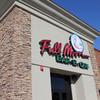When it comes to owning a home in metro Denver, some consumers may feel like they do when in a store staring up at a product high on a shelf and wondering how they are going to get that thing down and into their hands.
But compared to many cities, the homeownership shelf isn’t so high in Denver that it can’t be reached with a small jump in income, according to an affordability analysis from the Canadian real estate brokerage Zoocasa.com.
Zoocasa looked at 35 major cities in the U.S. and Canada to determine how far the median income would stretch when it came to purchasing the median-priced home in a given market.
In 18 of those markets, or just over half, the median household would need to boost their incomes by $20,000 or more. In San Francisco, the median home price is $1.36 million, which requires an income of $236,268 a year to afford, assuming a 30-year mortgage at 4.5 percent and a 20 percent downpayment.
Problem is, the median household income is $96,265. That is rich by U.S. standards, but definitely not enough to provide homeownership in San Francisco. To buy the typical house there, the typical household would need to earn $140,000 more a year.
RELATED: Denver home sellers are missing the mark on listing price
Any wonder why so many Bay Area employers are looking to add workers in places like Denver, Salt Lake City and Reno? Checkr, a background check technology provider, is one of those companies. It’s considering Denver for an HQ2 with 1,400 jobs.
In Denver, the median home price used by Zoocasa was $375,000, which is below the $409,900 median price of a home sold in December, according to the Denver Metro Association of Realtors.
That $375,000 home requires a household income of $65,148, assuming 20 percent down and a 30-year mortgage at 4.5 percent. That is only $5,050 away from the $60,098 in median household income in metro Denver, according to Zoocasa.
That gap is small enough to put Denver just on the other side of affordable, a group that includes Detroit, Austin, Nashville and Portland, Ore. Under them are more affordable cities like Chicago, Atlanta and Phoenix.
Oklahoma City offers the best housing affordability among the larger metros. The median home price is $145,000, which requires a median income of $25,200 to support the mortgage payment. That’s way below the median household income of $51,581.
Zoocasa offers one approach to look at affordability, and there are others. For starters, not that many first-time buyers can afford to put 20 percent down on a home. And while the mortgage is the dominant cost, there are other expenses to cover.
Related Articles
-
Soaring prices leave many metro Denver homeowners sitting on a thick equity cushion
-
Denver home price gains in January slowest since 2012
-
Denver’s latest big idea for affordable housing is tiny apartments (some the size of your master bedroom)
-
Home prices decline in two more metro Denver counties
-
Denver real estate broker Redefy going public
ATTOM Data Solutions does a different analysis of affordability that includes property taxes and insurance costs and assumes a 3 percent down payment, not 20 percent down. Rather than looking at median household income, it looks at the average weekly wage, which works out to an annual income of $69,303 a year in metro Denver.
Its measure shows that median home prices are not affordable to average wage earners in 335 of 473 U.S. counties, or 71 percent of the country. In metro Denver, covering costs associated with a median-priced home would consume 42 percent of income, above the recommended cap of 30 percent advised by the U.S. Department of Housing and Urban Development.
The ATTOM report does offer some hope to buyers. Wage gains are finally starting to pick up and home price gains are slowing and even falling. Mortgage rates have also moved lower this year.
“Affordability may improve because of the simple fact that homes are out of reach for so many home seekers, suggesting that prices need to moderate up in order to attract buyers,” said Todd Teta, chief product officer with ATTOM Data Solutions, in the report.


